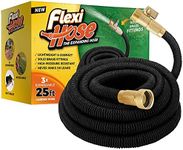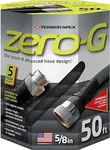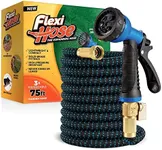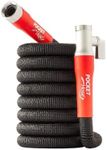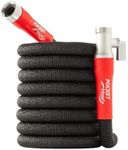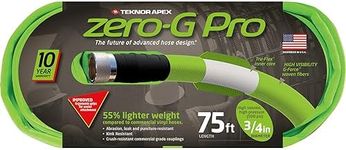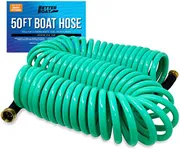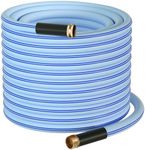Buying Guide for the Best Pocket Hoses
Pocket hoses, also known as expandable hoses, are a convenient and space-saving alternative to traditional garden hoses. They are designed to expand when water flows through them and contract when the water is turned off, making them easy to store and handle. When choosing a pocket hose, it's important to consider several key specifications to ensure you get the best fit for your needs.LengthThe length of a pocket hose is important because it determines how far you can reach with the hose. Pocket hoses come in various lengths, typically ranging from 25 feet to 100 feet. If you have a small garden or patio, a shorter hose (25-50 feet) may be sufficient. For larger yards or if you need to reach distant areas, a longer hose (75-100 feet) would be more appropriate. Consider the size of your outdoor space and the distance you need to cover when choosing the length.
MaterialThe material of a pocket hose affects its durability and flexibility. Common materials include latex, rubber, and polyester fabric. Latex hoses are generally more flexible and lightweight, while rubber hoses are more durable but heavier. Polyester fabric hoses offer a good balance of flexibility and durability. If you need a hose that can withstand frequent use and rough handling, opt for a more durable material like rubber or reinforced polyester. For occasional use and easy handling, latex or standard polyester may be sufficient.
FittingsFittings are the connectors at the ends of the hose that attach to the water source and nozzle. They are typically made of plastic or metal. Metal fittings, such as brass, are more durable and resistant to wear and tear compared to plastic fittings. If you plan to use the hose frequently or for heavy-duty tasks, metal fittings are a better choice. For light gardening or occasional use, plastic fittings may be adequate. Ensure the fittings are compatible with your existing garden tools and water source.
Burst PressureBurst pressure refers to the maximum pressure the hose can withstand before it bursts. This is an important spec to consider, especially if you have high water pressure or plan to use the hose for tasks that require strong water flow. Pocket hoses typically have burst pressures ranging from 200 to 600 PSI (pounds per square inch). For general gardening and watering, a hose with a lower burst pressure (200-300 PSI) may be sufficient. For more demanding tasks or high-pressure systems, look for a hose with a higher burst pressure (400-600 PSI).
WeightThe weight of a pocket hose affects how easy it is to handle and maneuver. Lightweight hoses are easier to carry and move around, making them ideal for people who may have difficulty handling heavier hoses. However, lighter hoses may be less durable. Heavier hoses, while more cumbersome, tend to be more robust and long-lasting. Consider your physical strength and how often you will be moving the hose when choosing the weight. If ease of use is a priority, opt for a lighter hose. If durability is more important, a heavier hose may be a better choice.
